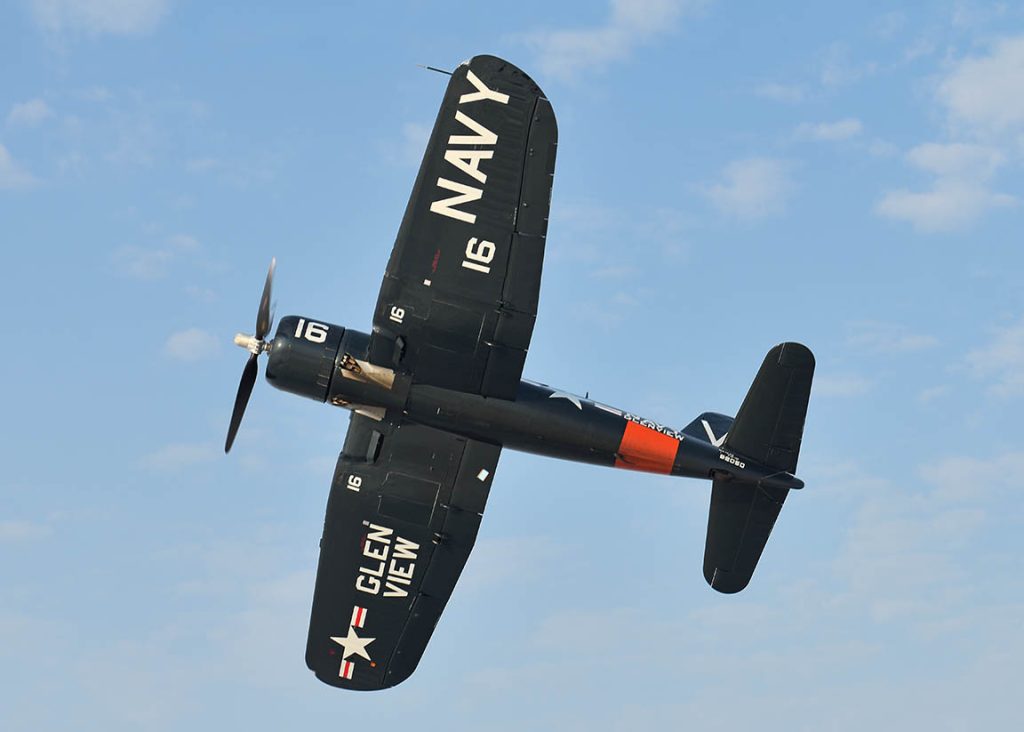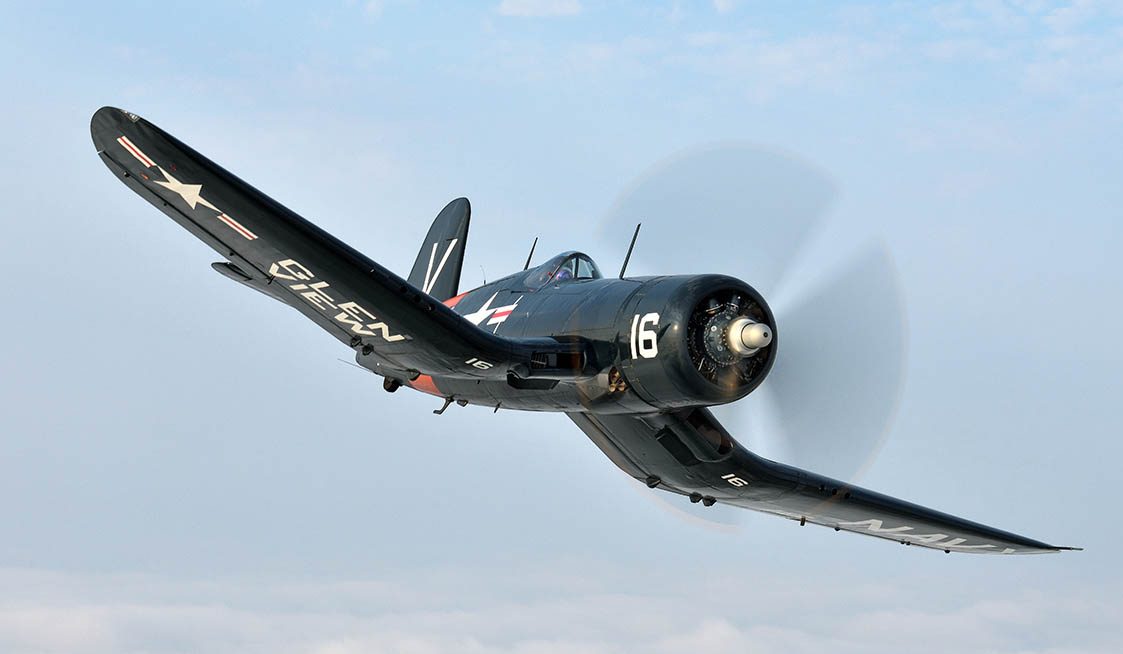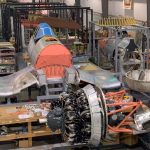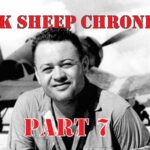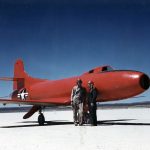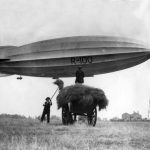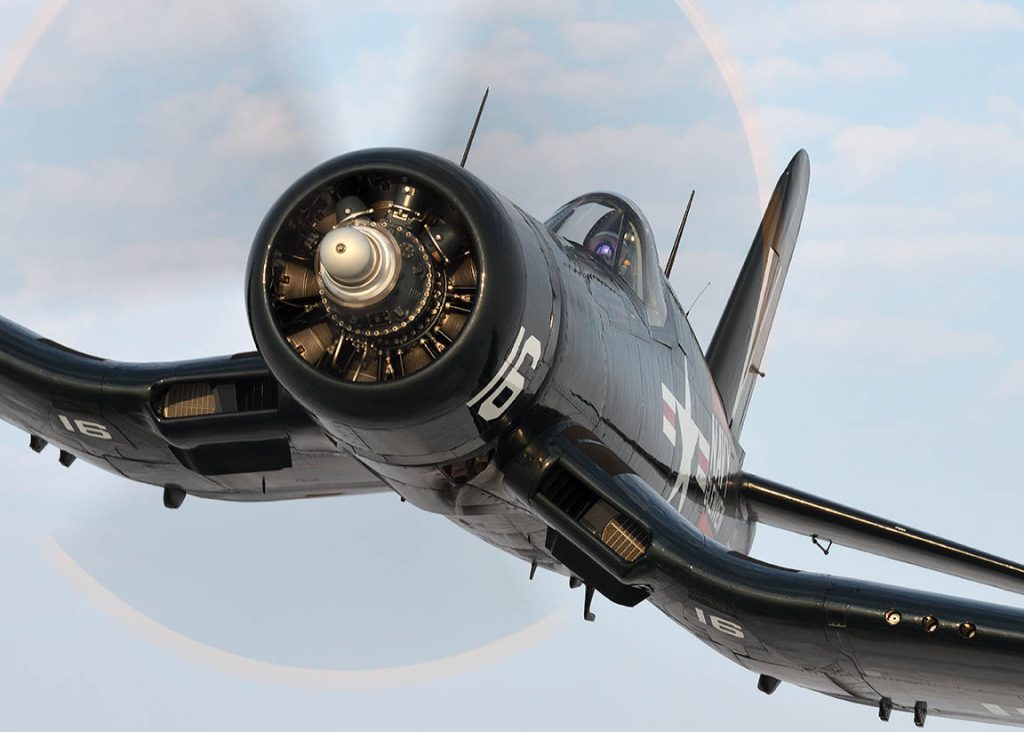
When FG-1D BuNo 92050 departed Goodyear’s Akron production facility on May 12, 1945, it headed for NAS San Diego, California where it remained in the aircraft pool until December 1945, after which it headed north to the reserve squadron at NAS Seattle, Washington. In November 1947, the aircraft made its first of three trips to Jacksonville for maintenance. Between May 1948 and March 1952, this Corsair served in reserve squadrons in Minneapolis, Seattle, and San Diego. In December 1952, it briefly joined the Marine Corps at MCAS El Toro, California, at the same time as the American Honor Foundation’s F4U-4 97359, of Baa Baa Black Sheep television fame. In April 1953, the fighter again reverted back to the Navy Reserve, rotating between Grosse Ile, Dallas, and Seattle over the next thirteen months.
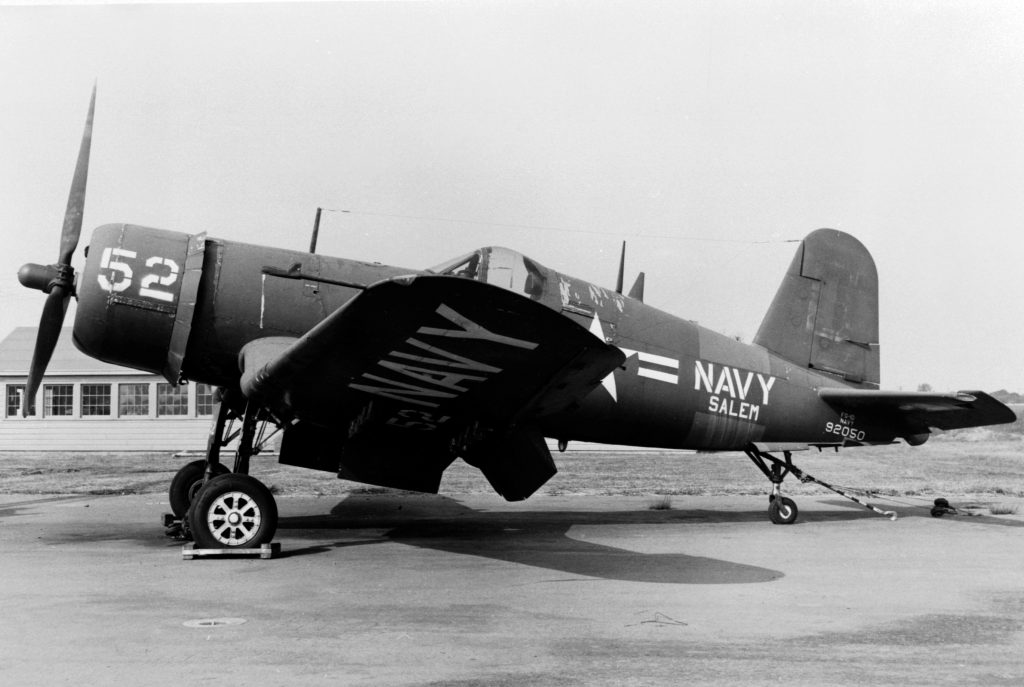
On September 9, 1954, with 1,491.7 hours total time, ‘050 was stricken while still in Seattle, where it remained until it was purchased by George F. Kreitzberg of Salem, Oregon on May 22, 1958. The purchase price was a paltry $259.00 or $2,831.18 in today’s money. Bearing the registration N6604C, the fighter passed through seven owners in five states between 1958 and 1963, yet it flew less than 30 hours. On May 15, 1963, Colorado-resident Robert A. Mitchem purchased the aircraft, but rarely flew it until he decided to go air racing in 1966. In a June 10, 1966, letter to the FAA, Mitchem requested a new N-number. “The reason we require a new number is due to the fact that the aircraft is designed and modified for unlimited racing and since the racing number placed upon the aircraft by the National Aeronautic Assn. [sic] is #94, we would like the above first choice number…” he wrote. Mitchem requested N94G or N94FG, but the Corsair ultimately went on the register as N194G, which it retains to this day.
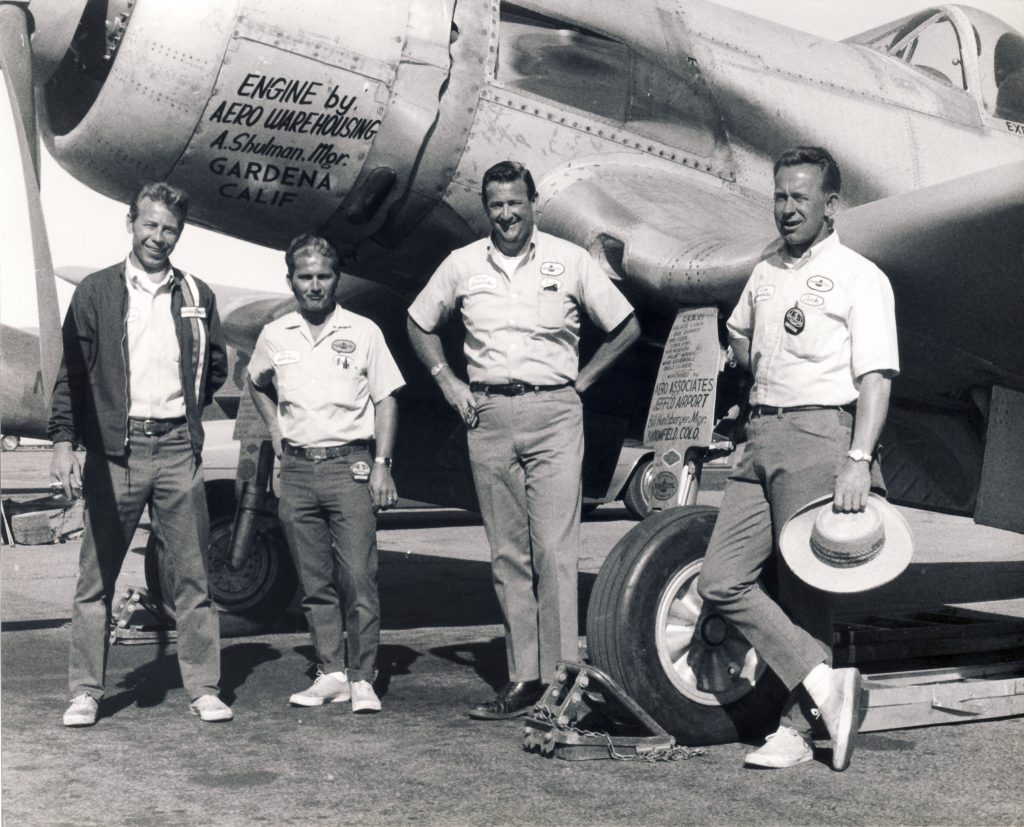
When Mitchem arrived over Stead in September 1967, he did so with a bang…literally. What exactly happened en route is unknown, but when the bare metal Corsair entered the pattern, it was smoking heavily from two blown jugs. Upon touching down, the engine completely seized, and he blew the left main tire, stopping the fighter. Mitchem’s team attempted to repair the aircraft but were unable to do so before the qualification deadline.
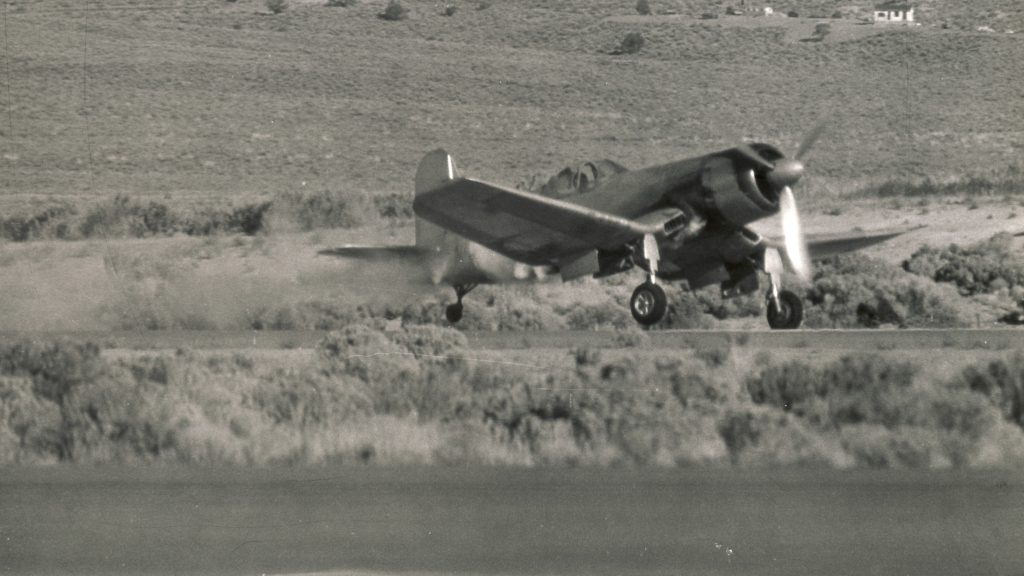
When Mitchem returned to Reno in 1970, the Corsair had received several modifications, including an R-2800-34W radial with a downdraft carburetor, a cut-down Skyraider prop, and a P-51H spinner. Internally, the stock oil cooler was replaced with a unit from an R-4360, while a 100-gallon tank behind the pilot’s seat fed a spray bar system. Aerodynamic mods include sealed cowl flaps, metalized control surfaces, and wingtips clipped three feet eight inches on each side. To reduce weight, the gear retraction mechanism was removed. Ultimately, Mitchem’s racing career never amounted to much. In 1970 and ’72 (He could not qualify in 1971), he competed in four races and scored a single top 3 finish. At the end of Reno ‘72, Mitchem took off from Stead for the flight back to Broomfield. Neither Mitchem nor 92050 would ever return.
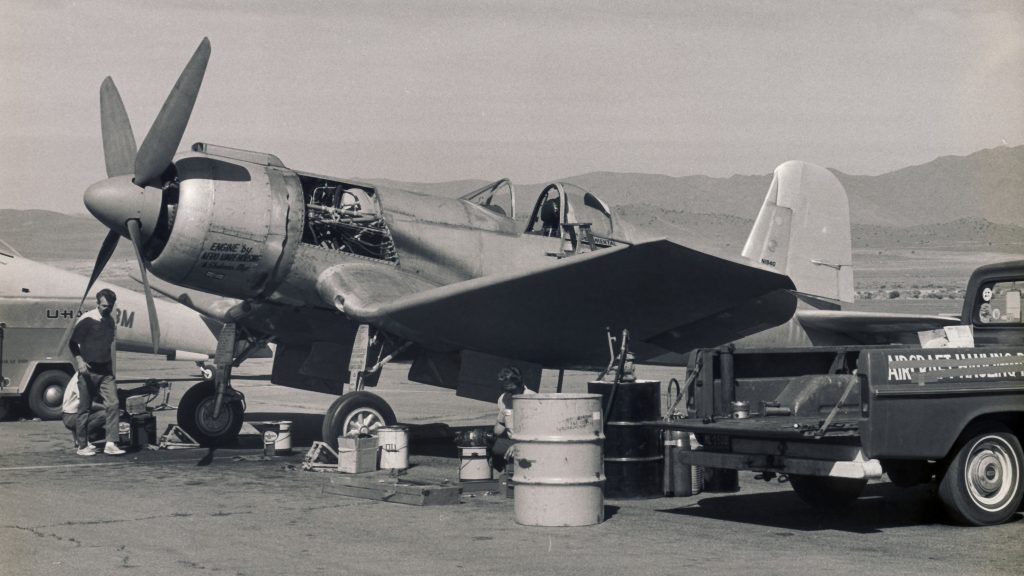
In March 1976, James Robert “Bob” Axtell of Elizabeth, Colorado acquired the fighter, which still had barely more than 1,500 hours on the airframe. Axtell performed a few additional race-centric modifications, including a stinger-style tailcone, but never attempted to compete with the aircraft and it was stored in a T-hangar at Jefferson County Airport (BJC) in Broomfield, Colorado. In 1999, he decided to indefinitely loan the fighter to the Wings Over The Rockies Air & Space Museum (WOTR), located on the former Lowry AFB east of Denver. In December 2021, Exhibits/Collections Manager Stewart Bailey connected the author with restoration volunteer Dave Tomacek, who said when Axtell loaned the Corsair to the museum, it was a welcome addition because, at that time, the museum had less than half the aircraft it does today. A decade later however, the collection had grown substantially and the Corsair became a bit of a hinderance, so it was moved into storage in Hangar 2, where it remained until Axtell sold the aircraft to Warbird Heritage Foundation in 2012.
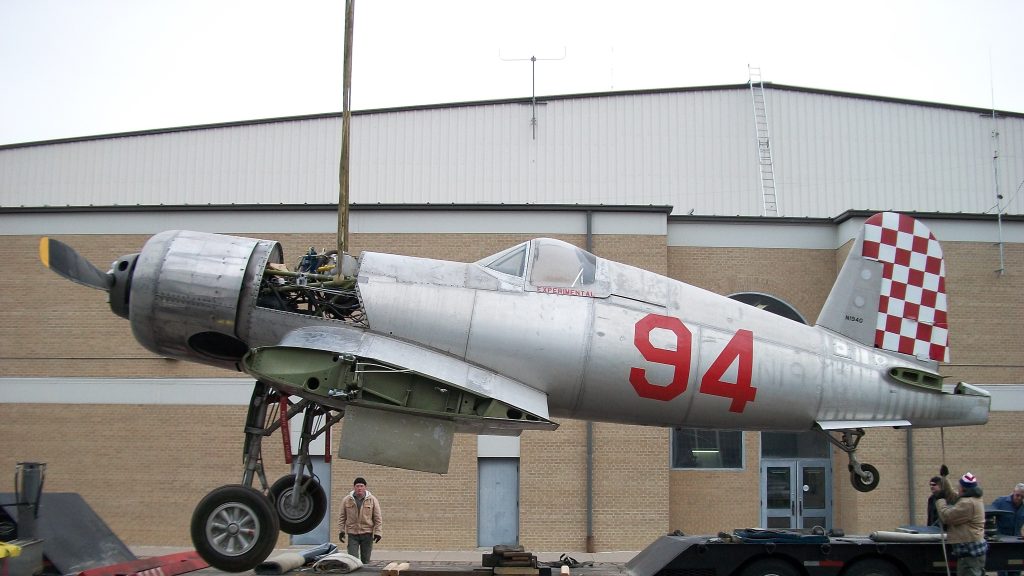
In December 2021, the author spoke with Paul Wood about how the WHF acquired and restored the aircraft. “We had been looking for a Corsair project for many years and looked at several before finally acquiring this aircraft,” Wood said. “This was certainly a project, because it still had all of its racing modifications. They clipped the wings, put a big Skyraider prop on it, and changed to the profile of the wing roots inlets. Internally, they removed the wing fold mechanisms, including the hydraulics, actuators, and the tubing, everything. They also cut out the hinge points, so those had to be remanufactured.” The goal of WHF was not to bring it back to 100 percent “from the factory” stock, but to create a safe, solid, airworthy example of an FG-1D.
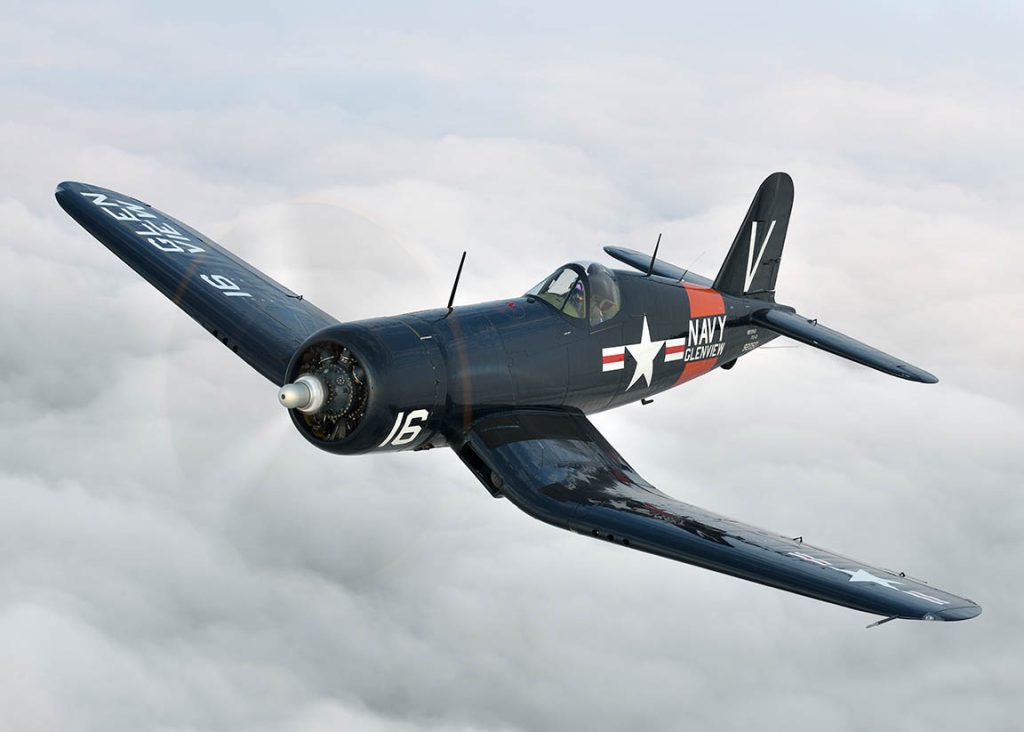
In choosing which shop would take on this challenging restoration, WHF officials chose Sam Taber’s Tab Air, Ltd in East Troy, Wisconsin. Not only because they’d done previous restorations for the museum but because of their outstanding craftsmanship. At the time, it was expected to take three to five years to get the Corsair flying again, but it ended up taking nearly a decade. As Paul explained, this was not a problem. “He [Sam] does a lot more than just restorations; he also does maintenance services, especially during the traditional flying museum, say between May and November. So, during that time, they would work on the Corsair part-time, but when winter arrived, his crew would shift to restoration projects. If they had worked on it full-time, year around, it would have been a three to five-year project, but because he was only working on it part-time, it took longer, and I was okay with that because I wanted Sam to do the work because he does great work.”
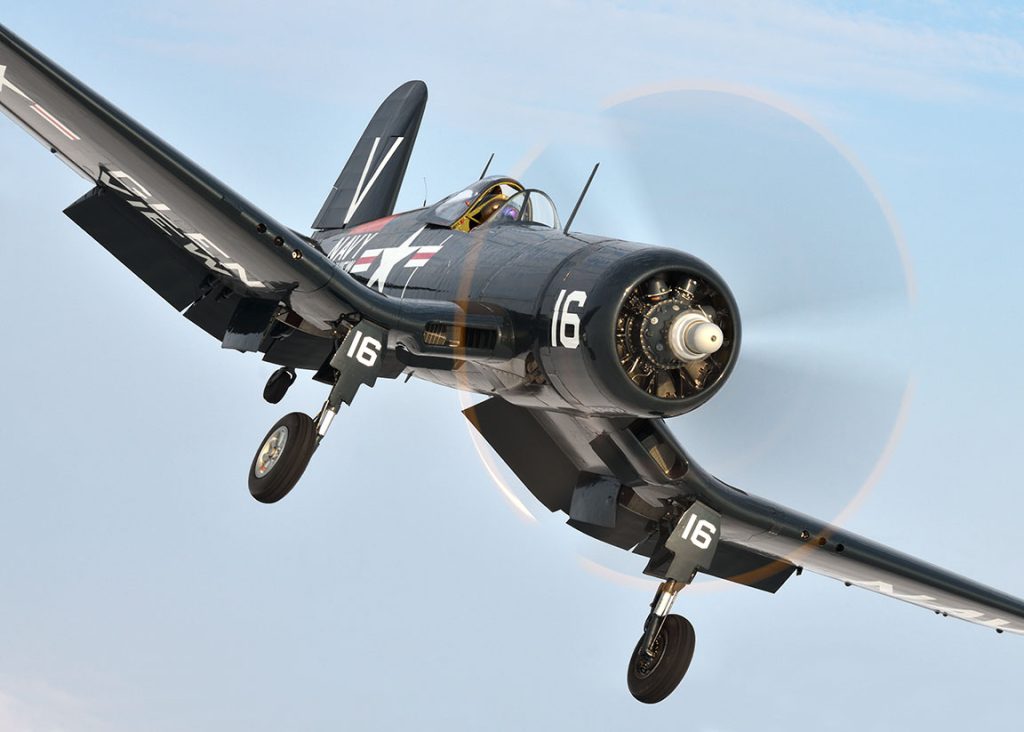
When a warbird is being restored, perhaps the most popular question put to owners and shops concerns the paint scheme, and this restoration was no different. Paul explained their choice. “Our museum is in Waukegan, Illinois, near Chicago. Obviously, Glenview Naval Air Station is in Chicago as well. Being on the shores of Lake Michigan, we wanted to tell the story of World War II of how all naval aviators going into the fight in World War II went through Glenview Naval Air Station and made their carrier qualifications aboard USS Wolverine and Sable.”
In an era where battleship admirals viewed naval aviation as an insignificant annoyance, the Naval Air Militia Act of 1920 called for the formation of Navy and Marine Corps Reserves, which received ardent support from the first chief of the Bureau of Aeronautics Rear Admiral William A. Moffett. Three years later, in September 1923, Naval Reserve Air Base (NRAB) Great Lakes, was established on the shores of Lake Michigan north of Chicago. Less than a decade later, the ever-increasing performance of naval aircraft was out growing the runway at Great Lakes, so Chief of Naval Operations Admiral William D. Leahy approved the recommendation that the Navy moved its operation south to Curtiss Reynolds Wright Airport in Glenview, Illinois.
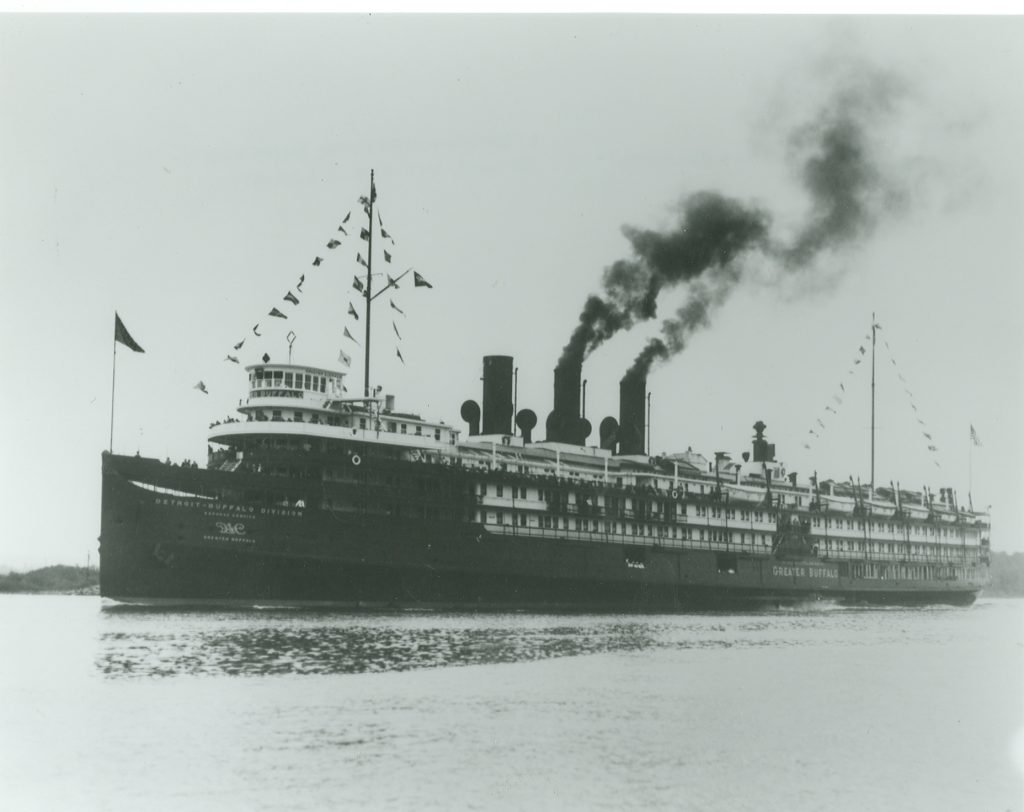
On August 28, 1937, formal commissioning ceremonies formally established NRAB Chicago, under the command of Lieutenant Commander (LCDR) G.A.T. Washburn. By logging their first ten hours of flight instruction prospective aviation cadets took their first steps towards becoming a naval aviator at Chicago. If a cadet soloed at Chicago, they would become eligible to enter flight training in Pensacola, Florida. Soon after the Japanese attack on Pearl Harbor, NRAB Chicago received a $12.5 million appropriation to expand its facilities because there would soon be a massive influx of aviation cadets. On October 1, 1942, Chicago was designated a Naval Primary Training Command and on New Year’s Day 1943, NRAB Chicago was re-designated NAS Chicago.
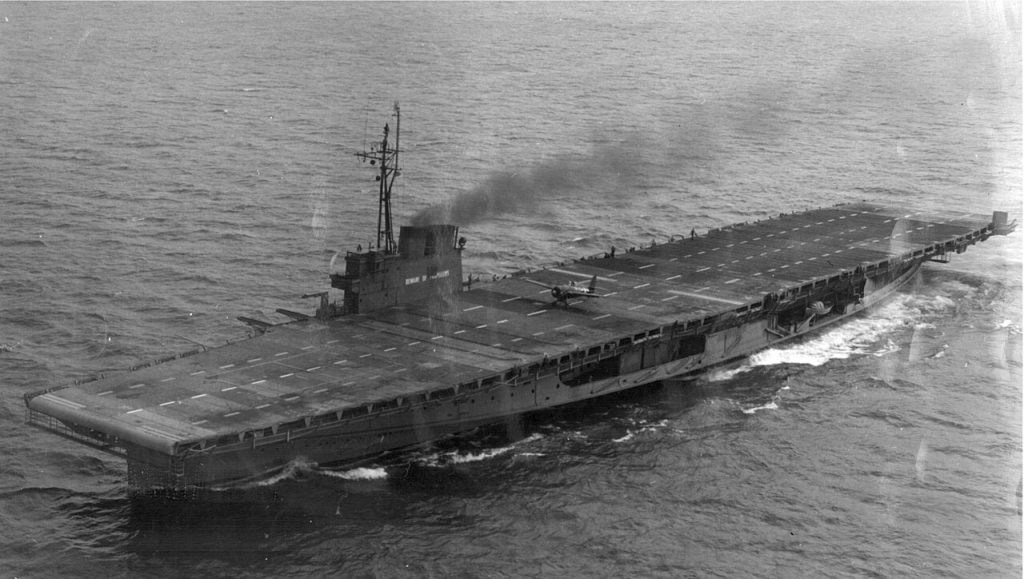
Expanding its facilities to train new pilots was one thing, but the Navy needed to train carrier pilots. In the early part of the war the Navy was short of aircraft carriers, and even if carriers could have been spared carriers for training, the threat of Japanese submarines in the Pacific and roving wolfpacks of German U-Boats in the Atlantic meant that a safe alternative needed to be found. In the summer of 1942, Commander Richard Whitehead came up with a solution by originating the idea of establishing a Carrier Qualification Training Unit (CQTU), and training pilots aboard carriers sailing within the safety of Lake Michigan. Using any existing carrier was out of the question for two reasons; first the Navy needed every carrier in the Pacific to stem the advance of the Japanese and even if one could be spared it would be too wide to pass through the Welland Canal to enter the Great Lakes region. This narrowed the search to ships narrow enough to pass through the canal or convert existing ships already plying the waters of Lake Michigan. The Navy’s additional stipulation was that the ship could be fitted with a 500-foot flight deck and be capable of 18 knots. The ultimate decision was made to convert the Great Lakes Excursion Cruisers SS Greater Buffalo and Seeandbee, which became USS Sable (IX-84) and Wolverine (IX-64), respectively.
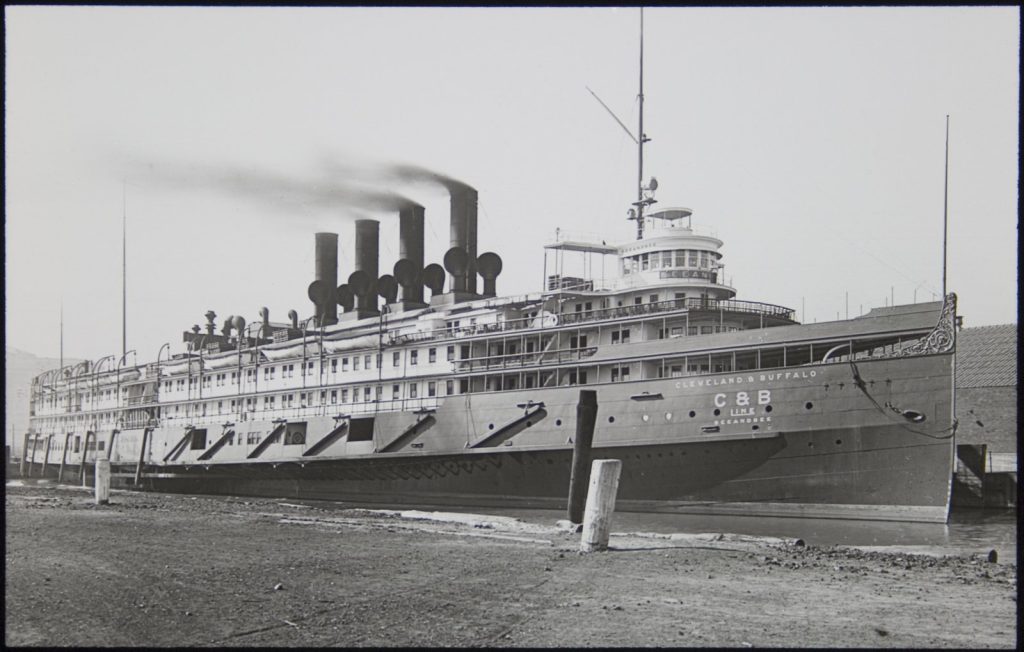
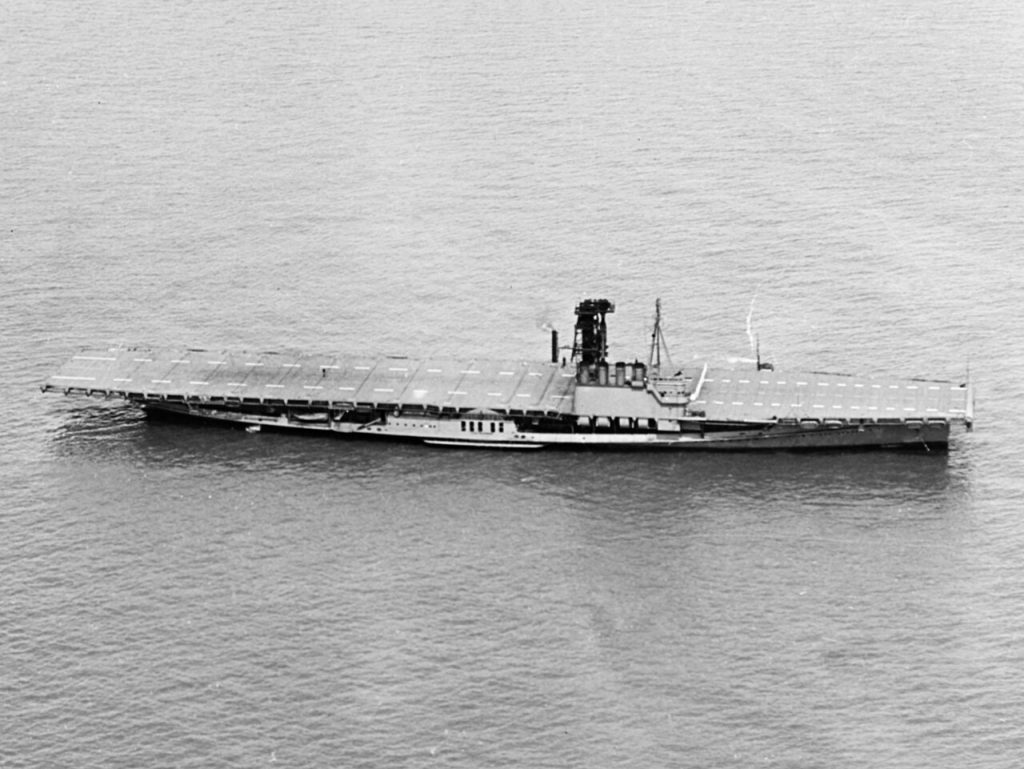
On August 25, 1942, three days after Chicago Mayor Edward J. Kelly (D) along with government and naval dignitaries officially welcomed Wolverine to the waters off the Windy City. LCDR Eugene J. O’Neill, skipper of the CQTU, became the first naval aviator to land on a freshwater, coal-fired, paddle-wheel aircraft carrier. On September 12, Ensign Biedleman, USNR, became the first pilot to fully qualify under the program. During the course of the war, each ship earned their own distinctions during their service. Most significantly, for one day in 1943, Wolverine became the flagship of the entire U.S. Navy when Admiral Ernest J. King inspected the ship. Another distinction, at least for the purposes of this article, came on April 2, 1943, when the first Corsair landed aboard a coal-fired training carrier. That landing was also the 500th for Wolverine. On August 10, 1943, the future 41st president of the United States, George H.W. Bush, earned his carrier qualification aboard Sable, the second youngest pilot in the CQTU program to do so. Two weeks later, Sable participated in trails of the Navy’s secret TDN drone aircraft. By the end of the war, 17,820 pilots performed 136,428 landings aboard Sable and Wolverine.
When our subject Corsair emerged from Tab Air’s shop, it was a stunning example of the popular warbird. On March 9, 2021, Mike Schiffer took FG-1D BuNo 92050 into the air on its first post-restoration flight. There were a few minor squawks, but “nothing major” according to Paul. Subsequent flights were undertaken by WHF pilot Stuart Milson. For the three years since, WHF has displayed the fighter a numerous airshows, much to the delight of warbird enthusiasts. It is hoped that when the Corsair goes to its new owner, they will continue to tell the story of how NAS Glenview and the Great Lakes carriers Sable and Wolverine contributed to America’s victory over the Japanese Empire.
